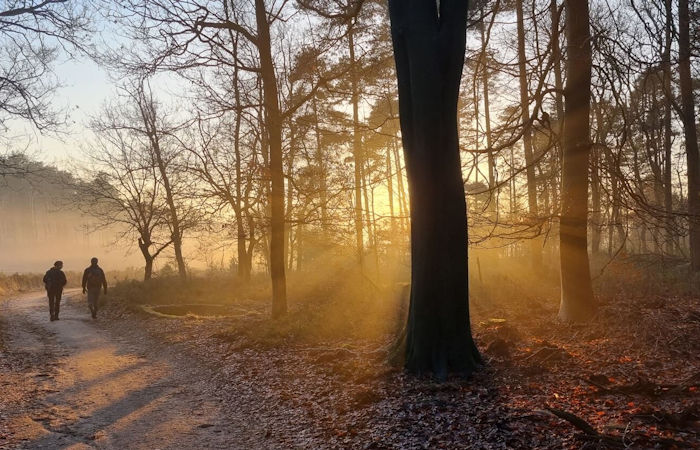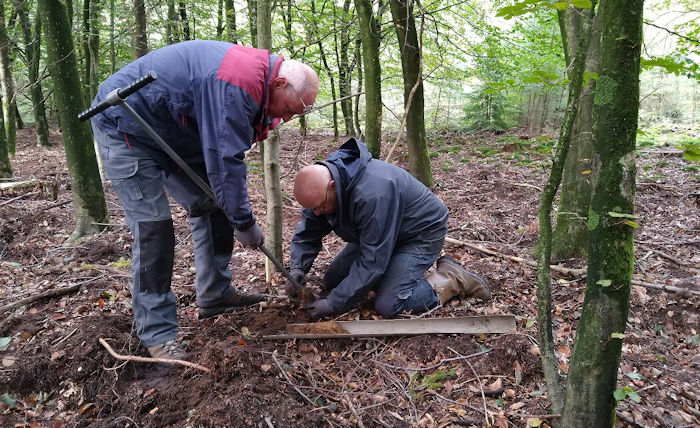Conny Waters – AncientPages.com – Over the past few years, citizen scientists from the Heritage Quest project have scoured the entire Veluwe and Utrechtse Heuvelrug areas for unknown archaeological heritage. One of the results of this research is that the number of known burial mounds in this area has doubled.
Heritage Quest, a fruitful collaboration between Leiden University and Gelderland Heritage is the first large-scale citizen-science project in Dutch archaeology. People could search for archaeological remains in the Veluwe and Utrechtse Heuvelrug areas from the comfort of their own homes.

Archaeology students in the field verify the remains found online. Credit: Leiden University
In total, over 6,500 people worked on the project and identified thousands of potential archaeological objects, such as burial mounds (c. 2,800-500 BC), Celtic fields (prehistoric field complexes dating from 1,100 to 200 BC), charcoal kilns (places where wood was burned to make charcoal) and cart tracks.
“This research wouldn’t have been possible without the tremendous efforts of the volunteers. And without their help the help of the citizen scientists, it may have taken us archaeologists ten years to arrive at the same results,” says Eva Kaptijn, an archaeologist from Gelderland Heritage.
Once the online detective work had been completed, volunteers, archaeologists and archaeology students from Leiden University went out into the field to verify a sample of the remains that had been found.
They took soil samples from over 300 mounds scattered across the Veluwe and Utrechtse Heuvelrug and discovered that 80 of these were real, as-yet-undiscovered burial mounds. They then used the data from this sample group to estimate the number of remains in areas that had not yet been verified in the field. The chances are very high that over 1,250 of these sites are actually prehistoric burial mounds.
This citizen science project has therefore doubled the number of known burial mounds in the Veluwe and Utrechtse Heuvelrug. In addition, 36 km2 of prehistoric fields, around 900 charcoal kilns and countless examples of old cart tracks have been found. The results will be presented in Apeldoorn on 26 January during a celebration organized by Gelderland Heritage.

Volunteers taking soil samples in the Speulderbos woods. PH๏τo: Eva Kaptijn
“Having so many volunteers participate has produced an unprecedented amount of new data and radically changed our view of prehistory. The Veluwe and Utrechtse Heuvelrug prove to have been much more intensively inhabited than we thought,” says Quentin Bourgeois, an ᴀssistant professor at Leiden University, in a press statement.
The remains discovered have not only produced new academic knowledge but also made it easier to protect this unique heritage. Municipalities and park managers can use the data in their policy and management plans. In addition, involving the general public in this research has increased people’s awareness of the presence and value of their archaeological heritage.
Research into the project’s impact has shown that the more you know about your history, the greater your appreciation of your surroundings and your sense of ownership and place. You don’t have to go to Egypt or Stonehenge for global heritage because it starts in your own backyard. All over the Veluwe and Utrechtse Heuvelrug are structures made by our predecessors.
See also: More Archaeology News
“This project has made me more aware of my surroundings. I see them with different eyes. This heritage has been around for so long; we should protect it,” says Janny Bas, an enthusiastic participant in the Heritage Quest project.
Written by Conny Waters – AncientPages.com Staff Writer





